 |
 |
 |
| |
Safety, Pharmacokinetics, and Immunogenicity of BMS-986263/ND-L02-s0201
in Healthy Japanese and Non-Japanese Participants
|
| |
| |
Download the PDF here
Download the PDF here
Reported by Jules Levin
The Liver Meeting 2018, American Association for the Study of Liver Diseases (AASLD), San Francisco, CA, November 9-13, 2018
Benjamin Soule, Edgar D. Charles, Giridhar S. Tirucherai, Frans Roodt, Uma Kavita, Ratna Revankar, Rose Christian
Bristol-Myers Squibb, Princeton, New Jersey
EASL/2018: Safety, Tolerability, and Pharmacokinetics of BMS-986263/ND-L02-s0201, A Novel Targeted Lipid Nanoparticle Delivering HSP47 siRNA, in Healthy Participants: A Randomised, Placebo-Controlled, Double-Blind, Phase 1 Study - (04/24/18)
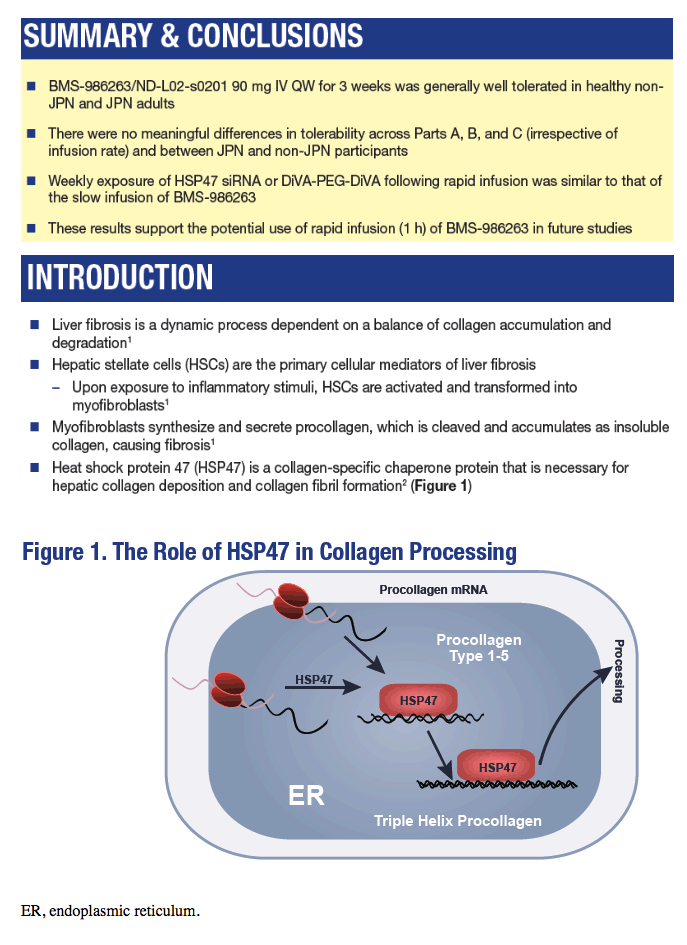
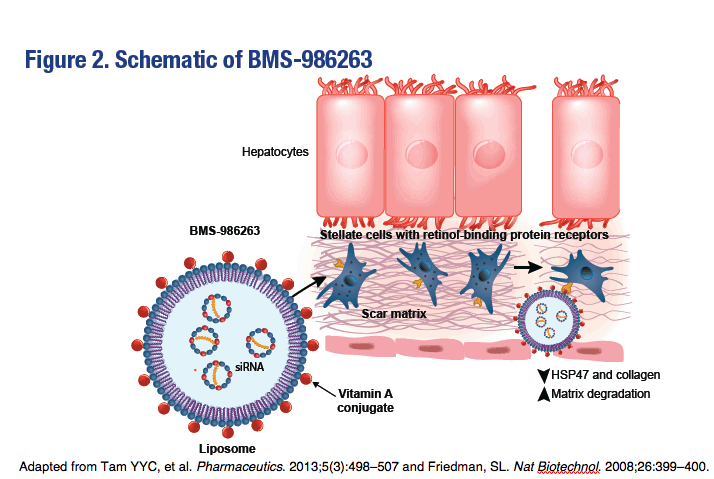
Adapted from Tam YYC, et al. Pharmaceutics. 2013;5(3):498-507 and Friedman, SL. Nat Biotechnol. 2008;26:399-400.
Sato. Nat Biot. 2008 26:431-42. Resolution of liver cirrhosis using vitamin A-coupled liposomes to deliver siRNA against a collagen-specific chaperone. abstract, pdf attached: There are currently no approved antifibrotic therapies for liver cirrhosis. We used vitamin A-coupled liposomes to deliver small interfering RNA (siRNA) against gp46, the rat homolog of human heat shock protein 47, to hepatic stellate cells. Our approach exploits the key roles of these cells in both fibrogenesis as well as uptake and storage of vitamin A. Five treatments with the siRNA-bearing vitamin A-coupled liposomes almost completely resolved liver fibrosis and prolonged survival in rats with otherwise lethal dimethylnitrosamine-induced liver cirrhosis in a dose- and duration-dependent manner.
Rescue was not related to off-target effects or associated with recruitment of innate immunity. Receptor-specific siRNA delivery was similarly effective in suppressing collagen secretion and treating fibrosis induced by CCl4 or bile duct ligation. The efficacy of the approach using both acute and chronic models of liver fibrosis suggests its therapeutic potential for reversing human liver cirrhosis.
Friedman SL. Nat Biot. 2008 26:399. Targeting siRNA to arrest fibrosis, pdf attached. "Hepatic fibrosis is a scarring response to injury that underlies the development of end-stage liver disease, or cirrhosis, in hundreds of millions of patients with chronic hepatitis worldwide. Despite substantial progress in uncovering the cellular and molecular mechanisms of fibrosis, to date there are no approved therapies. In this issue, Sato et al.1 serve up a technical tour de force that could bring us closer to this elusive goal. Using several rodent models of hepatic fibrosis, they demonstrate a novel system for delivering an antifibrotic siRNA to hepatic stellate cells-the primary source of extracellular matrix, or collagen scar tissue, produced in response to liver damage2 (Fig. 1). A dramatic reversal of fibrosis and cirrhosis was observed after several treatments, attesting not only to the therapeutic potential of this approach but also to the remarkable resilience and regenerative capacity of liver. This study is among the first to successfully target stellate cells in vivo, using an elegant liposomal delivery system that exploits the uptake by these cells of vitamin A linked to liposomes. The liposomal targeting complex cleverly incorporates two critical constituents: vitamin A and an siRNA against the collagen chaperone heat shock protein 47 (HSP47). Inclusion of vitamin A confers a high degree of specificity for hepatic stellate cells, the primary site for storage of dietary vitamin A (retinoid). HSP47 expression in the endoplasmic reticulum correlates closely with collagen production, and in liver is localized to collagen-producing activated stellate cells...Another implication of the study is the potential use of this targeting complex to administer other therapies directly to hepatic stellate cells, including other siRNAs or small molecules....one could envision its use as an initial therapy to achieve rapid, potent antifibrotic activity followed by oral therapies to sustain the therapeutic benefit. Clearly, this technology opens new doors to improved understanding, diagnosis and treatment of hepatic diseases."
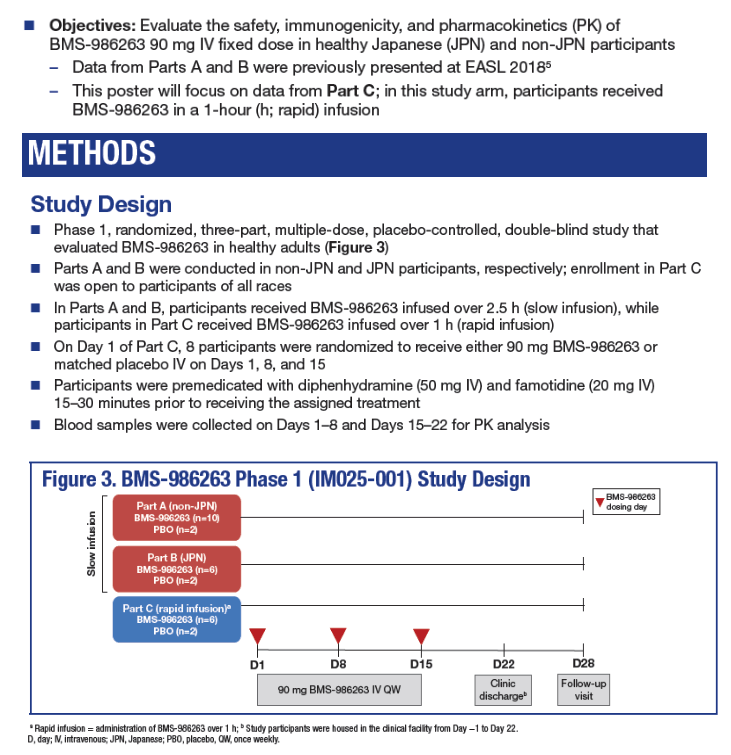
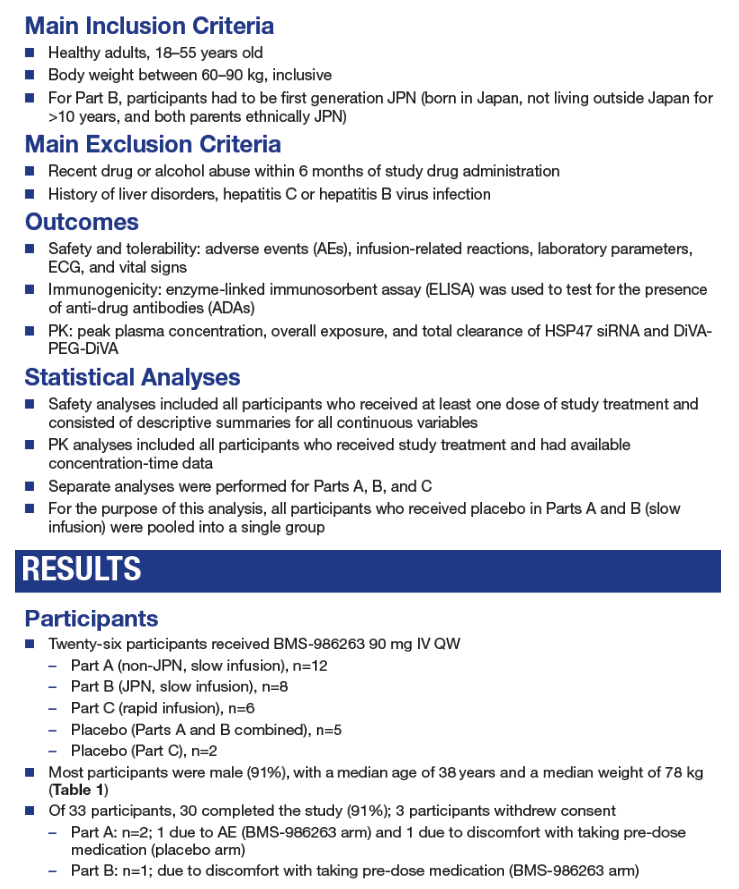
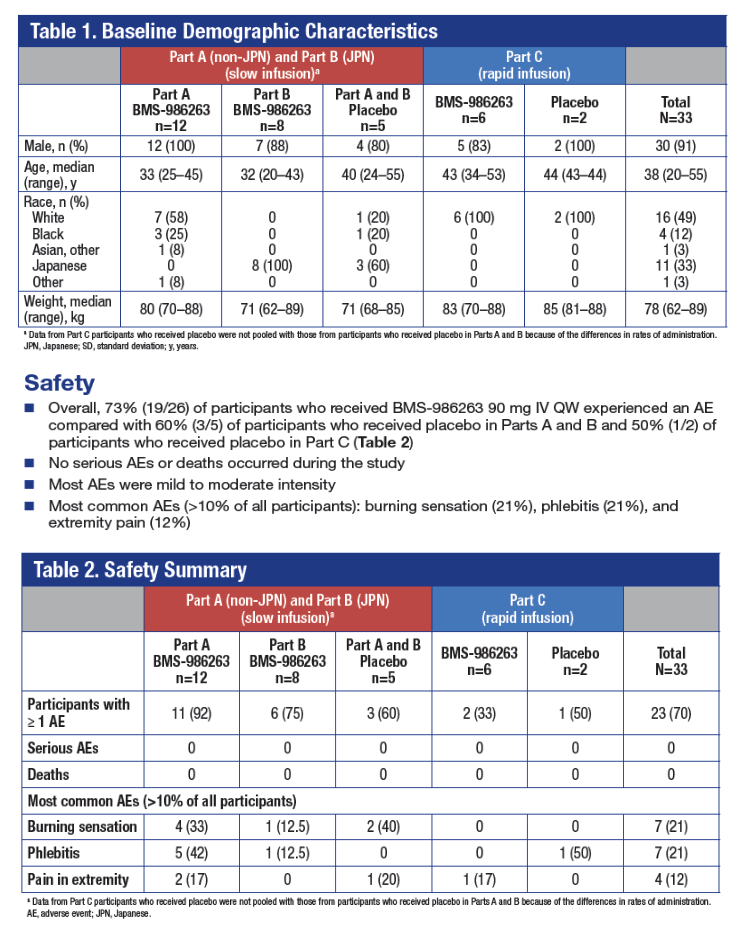
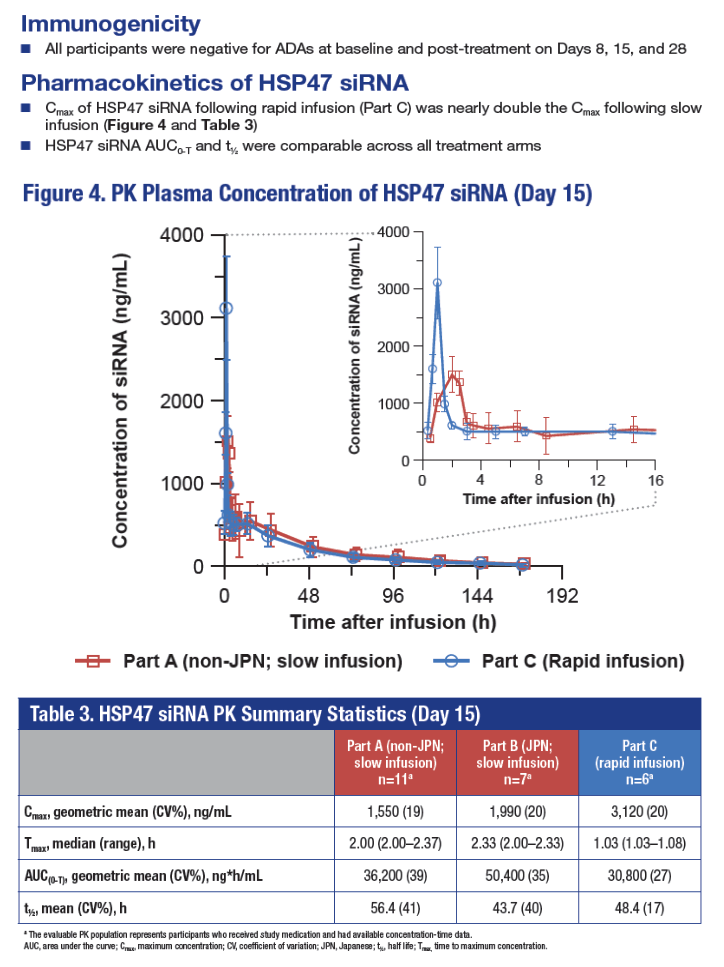
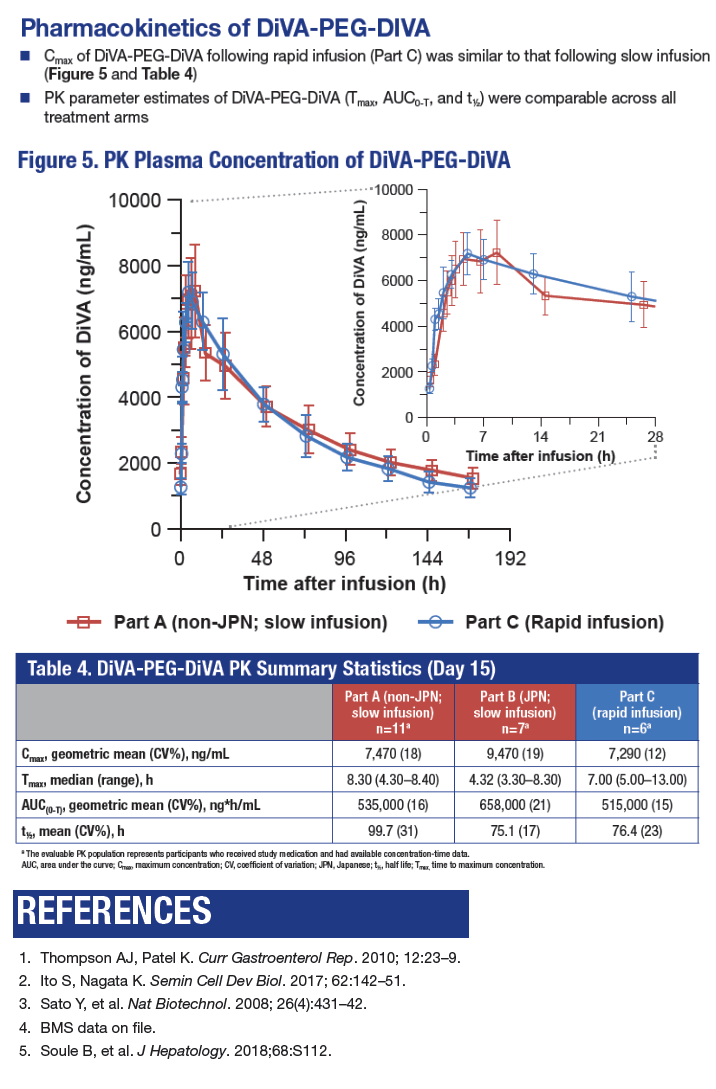
|
| |
|
 |
 |
|
|